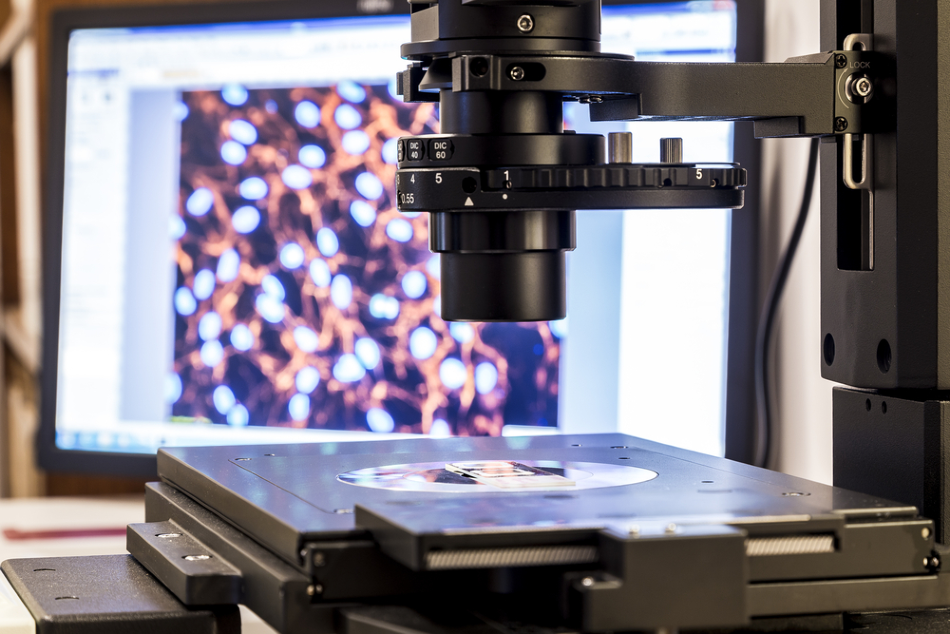Article updated on 17 August 2021.

Image Credit: dominika zara/Shutterstock.com
A new microscopy technique to improve scientists’ ability to characterize the electrical properties of nanomaterials has been developed, with researchers hoping their invention will pave the way for the characterization of new materials and more efficient energy-related devices.
As technology shrinks, it has become increasingly necessary to characterize the work function and surface potential properties of materials at the nanoscale. Work function helps scientists understand how electrical charges flow through a circuit, or how electrons are transferred in catalytic processes, while surface potential explains the electrical potential between the surface of a particle and any point in the material.
Nanomaterials measuring between 1 and 20 nm show great potential in next-generation electronic devices, solar cells, laser technology, and chemical and biosensors. However, revealing these features with current techniques can prove difficult as the methods are limited to structures with a spatial resolution higher than 30 nm.
Kelvin Probe Force Microscopy
Measuring the surface potential and work function of nanomaterials is essential in analyzing their electronic structure and surface residual charges.
Kelvin Probe Force Microscopy (KPFM) is widely used for mapping such behavior at the nanoscale. KPFM is an imaging technique of Atomic Force Microscopy (AFM), but is limited in spatial resolution to between 30 and 100 nm under ambient conditions by its use of AC voltage to charge the AFM probe.
As Xiaoji Xu, assistant professor in Lehigh University's Department of Chemistry, explains: "Every KPFM technique operates on the same measurement paradigm: AC voltage is used to completely charge an AFM probe, thus producing a detectable electrostatic force for image acquisition.”
"Overloading the probe with charges forces a limit on the spatial resolution, since the charges are not limited to the apex of the AFM probe,” added Xu, whose research group develops novel methods and instruments for chemical measurement and imaging at the nanoscale with a spatial resolution of less than 10 nm. “Instead, excess charges occupy the entire cantilever and contribute to the signal."
Pulsed Force Kelvin Probe Force Microscopy
To overcome these limitations, Xu and graduate student Devon S. Jakob have developed a novel measurement model based on the alignment of Fermi levels, i.e., the thermodynamic work required to add one electron to a solid-state body.
Known as Pulsed Force Kelvin Probe Force microscopy (PF-KPFM), the technique allows a 10 nm or less measurement of work function and surface potential in a single-pass AFM scan.
"In PF-KPFM, we removed the need for the AC voltage by implementing a custom circuit of a field effect transistor between the tip and the sample which acts as a binary switch," says Xu.
"When the switch is on, the circuit acts as a simple wire, allowing charges to pass between tip and sample. A small amount of charge spontaneously migrates between tip and sample based on the relative difference in their intrinsic Fermi levels. When the switch is off, the circuit does not allow for charges to pass, and acts as a capacitor to re-absorb the charges from the tip and sample region."
The technique operates solely in the pulsed force mode, meaning measurements can be accurately obtained at very small tip-sample distances, where the electric charge is large. This allows for small sample heterogeneities or differences to be revealed.
Click here for more information on optical microscopes.
Writing in ASC Nano, the researchers state the technique’s high spatial resolution surface potential mapping enables the in-situ deduction of ohmic and non-ohmic contacts between metals and semiconductors, mapping limits of ferroelectric areas of barium titanite, and characterizing protein aggregates. It could also aid studies aimed at uncovering the electrical properties of emerging photoactive materials, biological samples and semiconductor devices.
Adding Infrared Imaging
According to Xu, the next logical step was to combine the technique with Peak Force Infrared microscopy (PFIR) – an infrared imaging technology previously developed in Xu’s lab and discussed in an Angwandte Chemie study. The resulting PFIR-KPFM yields topographical, mechanical, chemical and electrical data at less than 10 nm.
Xu states that PF-KPFM is the first KPFM technique to truly apply the pulsed force mode of AFM for nanoscale surface potential characterization, and the first KPFM technique to be united with concurrent infrared detection in the same scan.
In addition to offering substantial enhancements in measuring the electrical potential in nanomaterials in a single-pass AFM scan, combining KPFM with PFIR yields high-throughput correlative measurements. The technique can demonstrate the correlation between chemical heterogeneity, structure and electrical properties of lab-made collar cell components.
Conclusion
The importance of accurately measuring the nano electrical properties of materials is wide-reaching, both in academia and in industry. The technique of PF-KPFM may help reveal features too small for other methods. The methods developed by Xu’s research group will continue to permit researchers to study previously unattainable nanoscale objects close to the lower limit of spatial scale.
References and Further Reading
Lehigh University (2020) New microscopy under ambient achieves less than 10 nm spatial resolution on surface potential measurement. [Online] Phys.org. Available at: https://phys.org/news/2020-06-microscopy-ambient-nm-spatial-resolution.html (Accessed 7 July 2020).
Jakob D, et al. (2020) Pulsed Force Kelvin Probe Force Microscopy, ACS Nano https://doi.org/10.1021/acsnano.0c00767 (Accessed 7 July 2020).
Jakob D, et al (2020) Peak Force Infrared–Kelvin Probe Force Microscopy, Angewandte Chemie https://doi.org/10.1002/anie.202004211 (Accessed 7 July 2020).
Disclaimer: The views expressed here are those of the author expressed in their private capacity and do not necessarily represent the views of AZoM.com Limited T/A AZoNetwork the owner and operator of this website. This disclaimer forms part of the Terms and conditions of use of this website.